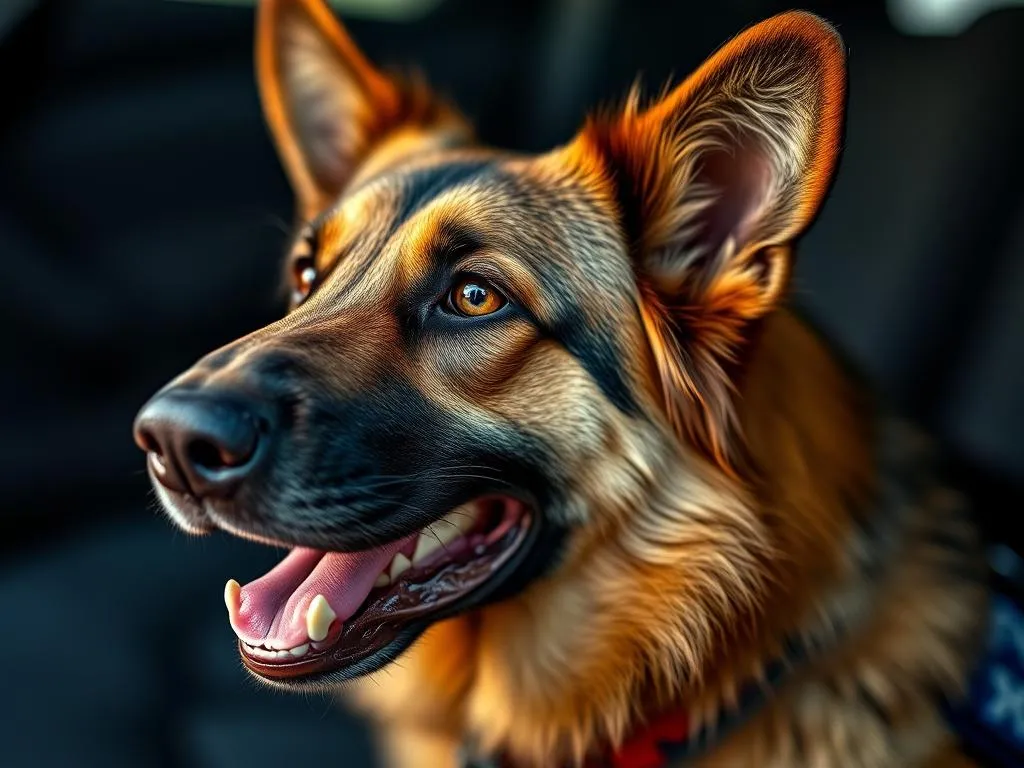
Introduction
Police dogs are invaluable assets to law enforcement agencies worldwide. Trained to assist officers in various capacities, these canines enhance public safety and provide unique skills that human officers may lack. Their roles range from tracking down suspects to detecting narcotics and even crowd control during public events. This article delves into the fascinating world of police dogs, exploring their history, types, training, daily lives, challenges, and their overall impact on law enforcement.
History of Police Dogs
Origins of Police Canines
The history of police dogs dates back centuries. Early uses of dogs in law enforcement can be traced to ancient civilizations, such as the Romans, who employed dogs for guarding and hunting. The first formal use of dogs in policing occurred in the early 19th century in Europe, where breeds like the Bloodhound were utilized for tracking criminals.
In the United States, the first organized police canine unit emerged in the 1900s. German Shepherds quickly became popular for their intelligence and trainability, leading to their widespread adoption in law enforcement agencies. Over time, various breeds became integral to police work, each contributing unique skills suited to different tasks.
Evolution of Police Dog Training
Training methods for police dogs have evolved significantly over the decades. Initially, training relied heavily on coercive methods, which often resulted in stress and behavioral issues. Today, the focus has shifted towards positive reinforcement techniques, promoting a healthier and more effective learning environment for the dogs.
Advancements in technology and research have also influenced police dog training protocols. Modern techniques incorporate scent detection science, behavior modification strategies, and even the use of clicker training, allowing handlers to communicate more effectively with their dogs.
Types of Police Dogs
Common Breeds and Their Specializations
Different breeds of police dogs have distinct roles based on their inherent characteristics. Here are some of the most common breeds and their specializations:
- German Shepherds: Known for their intelligence and versatility, they excel in patrol duties, search and rescue operations, and narcotics detection.
- Belgian Malinois: Smaller and more agile than German Shepherds, these dogs are often chosen for their speed and effectiveness in apprehension and detection tasks.
- Bloodhounds: Renowned for their exceptional sense of smell, Bloodhounds are primarily used for tracking missing persons and suspects due to their unmatched scent-tracking abilities.
- Labrador Retrievers: Often utilized for detecting drugs and explosives, these friendly and eager-to-please dogs are also used in search and rescue missions.
Specialized Units within Police Canine Teams
Police canine teams often consist of specialized units, each focusing on a specific area of law enforcement:
- Bomb Detection Units: Trained to detect explosives in various environments, these dogs play a crucial role in ensuring public safety.
- Patrol and Apprehension Units: These dogs assist in apprehending suspects and controlling crowds during large events.
- Search and Rescue Teams: In emergencies, these teams deploy dogs trained to locate missing persons in various terrains and conditions.
Training and Development
Initial Training Programs
The initial training programs for police dogs lay the foundation for their future success. Basic training typically begins with obedience commands, socialization, and building a strong bond between the handler and the dog. This bond is crucial, as it fosters trust and ensures effective communication during high-stress situations.
Handlers undergo training alongside their dogs, learning how to interpret their behavior and signals. This partnership is vital for effective teamwork in the field.
Advanced Training Techniques
Once the initial training is complete, dogs progress to advanced techniques tailored to their specific roles. For example, a narcotics detection dog may focus on identifying various drugs, while a search and rescue dog may practice locating individuals in diverse environments.
Continuous training is essential for skill enhancement, ensuring that both dogs and handlers remain sharp and effective. This ongoing education allows teams to adapt to new challenges and technologies in law enforcement.
Role of Handlers
Handlers play a pivotal role in the success of police canine teams. They are responsible for the day-to-day care, training, and well-being of their dogs. A strong, positive relationship between handler and dog can significantly impact the effectiveness of their work.
Handlers must possess a deep understanding of canine behavior, training techniques, and the specific skills required for their dog’s role. This expertise allows them to manage their dogs effectively, ensuring optimal performance in the field.
Day-to-Day Life of a Police Dog
Daily Routine
The daily routine of a police dog varies depending on the department and specific duties. Generally, police dogs begin their day with a morning exercise session, which may include obedience drills, agility exercises, and playtime. This routine helps maintain their physical fitness and mental sharpness.
After exercise, the dogs participate in training sessions tailored to their roles. These sessions often include scent detection drills, scenario-based training, and practice for public demonstrations.
Working in the Field
When deployed in the field, police dogs perform specific tasks based on their training. For instance, during crowd control situations, a patrol dog may assist officers in maintaining order and apprehending suspects. In search operations, a rescue dog may be called upon to locate missing individuals in challenging environments.
Real-life missions highlight the capabilities of police dogs. For example, a German Shepherd may successfully track a fleeing suspect through dense woods, while a Bloodhound can follow a scent trail that leads to a missing person. These interventions not only showcase the dogs’ skills but also affirm their crucial role in law enforcement.
Bonding with the Community
Police dogs often participate in community engagement activities, such as public demonstrations and school visits. These events help build trust between law enforcement and the community. By showcasing their skills and friendly demeanor, police dogs foster positive relationships with the public.
Through these interactions, community members gain a better understanding of the important roles police dogs play in enhancing safety and security. The visibility of police canine units can significantly improve public perception of law enforcement agencies.
Challenges Faced by Police Dogs
Physical and Mental Demands
The physical and mental demands of police work can be taxing for police dogs. They must maintain peak physical fitness to handle the rigorous demands of their duties. Regular exercise, a balanced diet, and routine veterinary care are essential to their health and performance.
Moreover, the psychological impact of police work can be significant. Dogs may experience stress due to exposure to traumatic situations, such as high-stress apprehensions or witnessing violence. It is crucial for handlers to recognize signs of stress and provide appropriate support and care.
Risks and Dangers
Police dogs face inherent risks and dangers in their line of work. They may be exposed to hazardous situations, including confrontations with armed suspects or dangerous environments. Protective measures, such as training in bite and attack scenarios, help prepare dogs for potential threats.
Safety protocols are in place to minimize risks, including the use of protective vests and regular health evaluations. Handlers are trained to prioritize their dogs’ safety while effectively managing police operations.
The Impact of Police Dogs on Law Enforcement
Enhancing Police Effectiveness
The presence of police dogs has been shown to enhance police effectiveness significantly. Statistics indicate that departments utilizing canine units often experience improved crime prevention and resolution rates. The ability of dogs to detect narcotics, locate missing persons, and apprehend suspects contributes to the overall success of law enforcement efforts.
Case studies demonstrate the pivotal role police dogs play in high-stakes situations. For instance, a canine unit may successfully locate hidden drugs during a traffic stop, leading to arrests and improved community safety. Such interventions illustrate the value of integrating dogs into law enforcement strategies.
Public Perception and Trust
The influence of police dogs on public perception of law enforcement cannot be overstated. These canines often serve as a bridge between the community and police officers, creating a more approachable image of law enforcement. Public interactions with police dogs can foster trust and cooperation, which are vital for effective policing.
Community events featuring police dogs also provide opportunities for education about their roles and capabilities. Increased awareness can lead to stronger community relations and support for law enforcement initiatives.
Conclusion
The life of a police dog is both rewarding and challenging. From their historical roots in law enforcement to their specialized training and daily routines, these canine heroes play a crucial role in enhancing public safety. Despite the challenges they face, their impact on law enforcement and community relations is profound. As we continue to recognize the importance of police dogs, supporting programs and initiatives that ensure their well-being and effectiveness remains essential.









